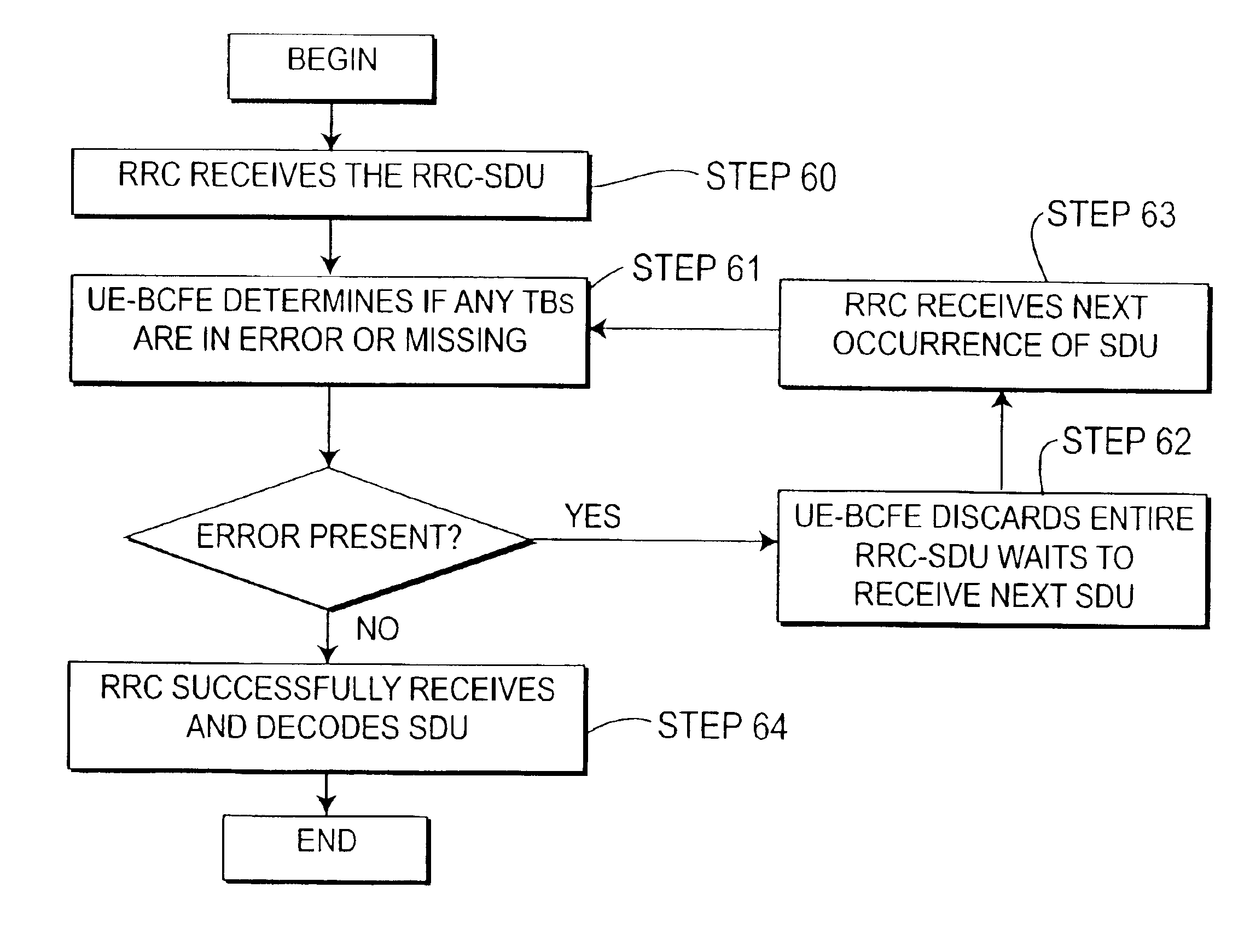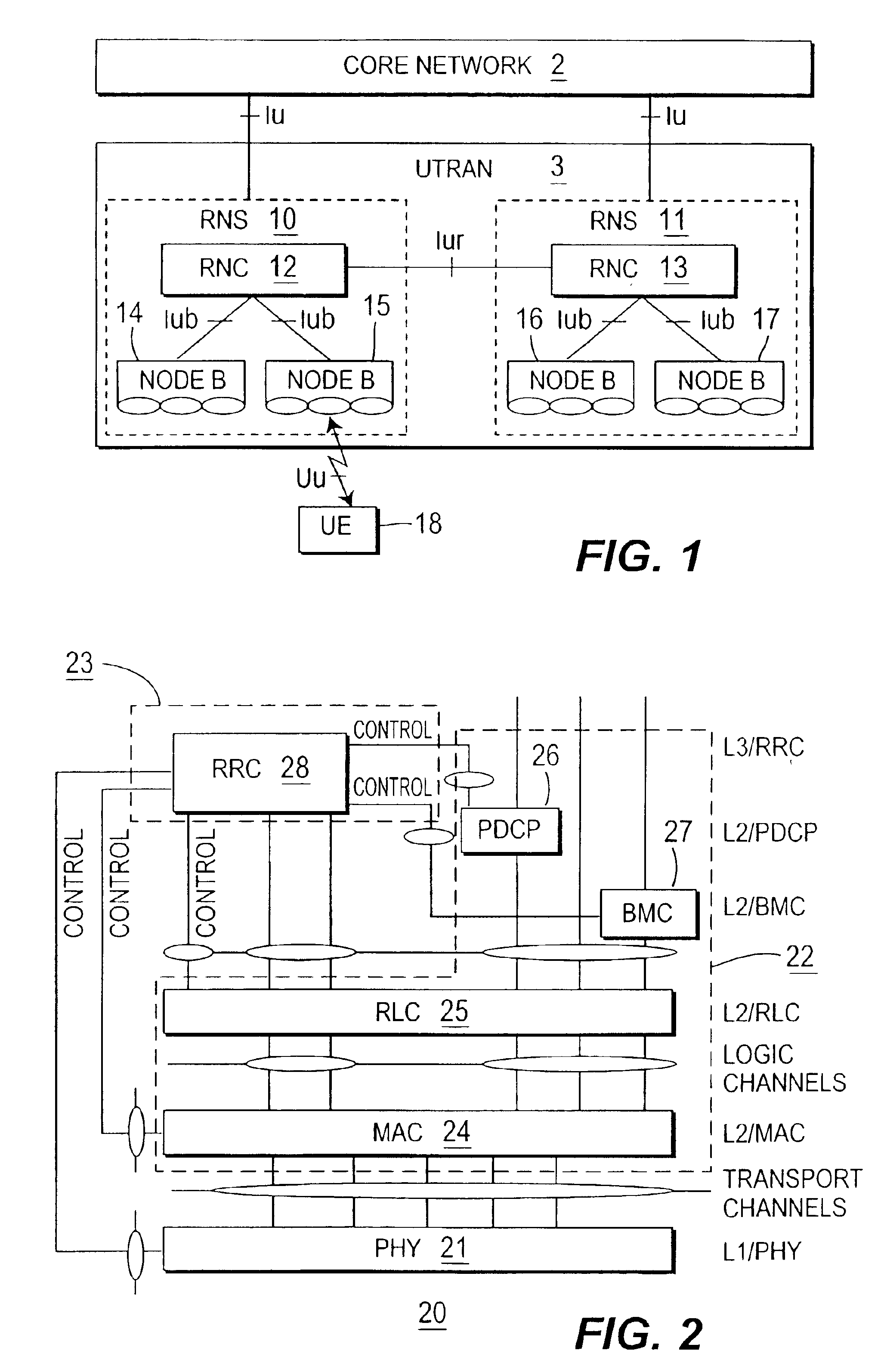Radio resource control-service data unit reception
a technology of radio resource control and data unit, applied in the direction of instruments, coding, code conversion, etc., can solve the problems of utilization, reducing the performance of system functions requiring system information and or increasing reception, and reducing radio resource efficiency
- Summary
- Abstract
- Description
- Claims
- Application Information
AI Technical Summary
Benefits of technology
Problems solved by technology
Method used
Image
Examples
Embodiment Construction
)
The preferred embodiment of the present invention will be described with reference to the drawing figures wherein like numerals represent like elements throughout.
Referring back to FIG. 4, the UE-L1 passes a received TB set, the SFN, and the CRC-error-detection result of each TB to the higher layers, (L2 and L3). Since the MAC and RLC layers 24, 25 operate in transparent mode for the BCCH, for example, the BCCH TBs can be forwarded to the L3 without processing. It is also possible that TBs with CRC errors are discarded by L2 or L3 before forwarding to L3.
FIGS. 7 and 8 are an illustration and flow diagram, respectively, of the method used in the preferred embodiment of the present invention. FIG. 7 illustrates an example scenario wherein an RRC-SDU is composed of nine (9) TBs with a repetition period of 64 frames. The UE-BCFE is informed in advance to expect the RRC-SDU from SFN=2 to SFN=to 18. The UE-BCFE receives the set of TBs corresponding to the RRC-SDU from one of the Node Bs ...
PUM
 Login to View More
Login to View More Abstract
Description
Claims
Application Information
 Login to View More
Login to View More - R&D
- Intellectual Property
- Life Sciences
- Materials
- Tech Scout
- Unparalleled Data Quality
- Higher Quality Content
- 60% Fewer Hallucinations
Browse by: Latest US Patents, China's latest patents, Technical Efficacy Thesaurus, Application Domain, Technology Topic, Popular Technical Reports.
© 2025 PatSnap. All rights reserved.Legal|Privacy policy|Modern Slavery Act Transparency Statement|Sitemap|About US| Contact US: help@patsnap.com



